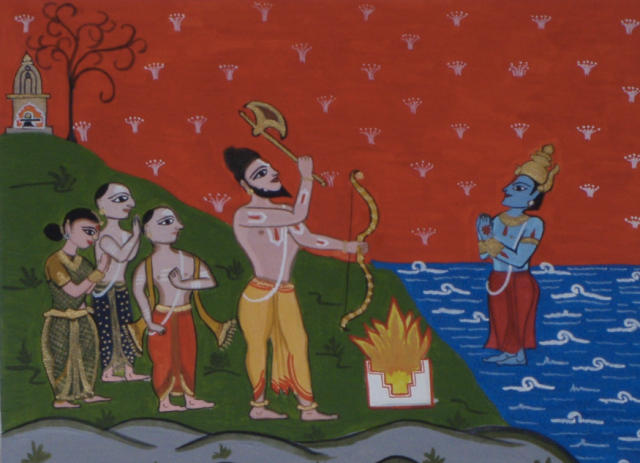The caste system has left its mark on Indians’ genomes

Lord Parshuram with Brahmin settlers commanding Lord Varuna to make the seas recede and allow Brahmins to make their homes in Kerala. (credit: Drshenoy)
Over 1,500 years ago, the Gupta emperors ruled large parts of India. They helped consolidate the nation, but they also popularized India's caste system, making it socially unacceptable for people to marry outside their castes. Now, a new analysis of genetic variation among contemporary Indians has revealed that this social shift left a distinctive genetic signature behind.
A group of researchers in India conducted this analysis by comparing the genomes of hundreds of Indians from throughout the country. As they write in a paper published today in Proceedings of the National Academy of Science, samples came from "367 unrelated individuals drawn from 18 mainland and two island (Andaman and Nicobar Islands) populations selected to represent geographic, linguistic, and ethnic diversities." Previous studies had suggested that today's Indians came from two ancestral populations, but the new analysis revealed four distinct "haplotypes," or bundles of genetic elements that travel through generations in a package. People with the same haplotypes likely came from the same ancestral groups. The researchers also found a fifth haplotype among people of the Andaman archipelago.
Careful examination of the variations between these haplotypes, compared with haplotypes of other people throughout the world, revealed that India's ancient populations probably came first from Africa. Later waves of settlement came from people who shared genetic similarities with populations in South Central Asia and East Asia. These groups remained genetically distinct, and the linguistic history of India suggests they spoke languages with dramatically different origins. Nevertheless, it appears there was a good deal of intermarriage, which shows up in genomes of people who possess genetic sequences typical of two or more haplotypes.
Read 6 remaining paragraphs | Comments